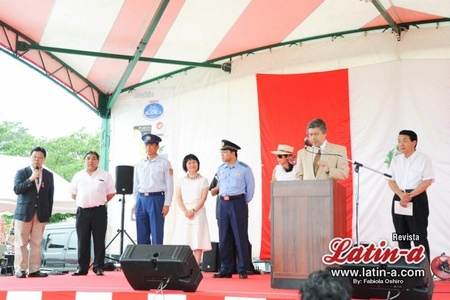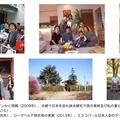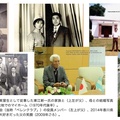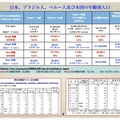As of 2014, Japan is currently facing a labor shortage in some industries, just as it did 30 years ago, and discussions are underway about accepting foreign workers. Most of the work is related to construction, including the construction of infrastructure needed to host the 2020 Olympics, repair of existing infrastructure, reconstruction work after the Great East Japan Earthquake, infrastructure development for new transportation networks, and the demolition and seismic reinforcement of old housing and public facilities, and there is a serious labor shortage. After the collapse of the bubble economy in the early 1990s, the construction industry was greatly affected and public works were drastically cut, so the number of construction companies was reduced by more than half, and many employees were forced to change jobs, which resulted in little development of young skilled workers. Over the past 15 years, 1.8 million people have left the industry, and one-third of the employees are over 50 years old.
In the midst of this, the economic recovery and the needs of the above-mentioned businesses have created a shortage of workers, and the same situation is also occurring in the food service, retail, transportation, and nursing care industries. As a result, even in non-regular employment such as part-time and casual workers, there is a serious shortage of workers for late-night and holiday work. Some companies are promoting the shift to full-time employment in order to secure human resources and improve working conditions.
In March of this year, it was reported that the government was seriously considering a plan to accept 200,000 foreign workers every year , with a view to combating the declining birthrate and aging population.1 An expert committee of the Council on Economic and Fiscal Policy is leading the discussions on this issue, and accepting this many workers would also involve a major policy change, as unskilled labor, which has been strictly regulated up until now, would also be allowed.2
Also, there are plans to further relax the current "Technical Intern Training Program3 " to more actively accept workers from developing and emerging countries and to extend the period of stay to a maximum of six years (if it is started in 2015, it will be possible to meet the labor needs up until the 2020 Olympics). At the same time, there are plans to relax the "Designated Activities" visa requirement in order to procure the necessary labor from overseas.
Every newspaper and magazine has covered this topic, and many books have been published or republished, but most of them are from extreme positions, and there is little constructive, realistic, and calm discussion.
Opponents point out that large numbers of immigrants will inevitably have a negative impact on Japan's unique culture, customs, and social structure, leading not only to a deterioration in public safety and increased social security costs, but also that a large labor force will lead to a collapse in wages in certain industries and an increase in the number of Japanese unemployed.
On the other hand, those in favor of immigration emphasize the positive aspects, such as that it increases diversity, helps curb the declining birthrate, increases tax and social security revenues, improves the low-productivity service sector, and increases healthy competition among highly skilled workers.
I have been involved with Japanese workers in South America for the past 20 years, and I don't think it is a simple issue that can be answered with a "yes or no" to immigration. However, it is also true that the Japanese government and society have a fairly well-established system for accepting foreign workers. By utilizing the accumulated know-how, it is possible to accept a certain number of foreign workers for urgent construction work and other jobs. However, in order to do so, they must take an intensive Japanese language course in their home country or in Japan for three months immediately after arriving (this course also includes Japanese customs and systems4 ), and they must receive thorough safety and health training at their assigned workplaces to prevent workplace accidents (interpreters will also be required for a certain period of time). However, in parallel with these measures, it is also important to create a labor market that is attractive to young Japanese people and those changing jobs and that allows them to work in a variety of occupations. Utilizing female and older workers and building a livable society are also major issues.
(1) The proposal to expand the foreign technical intern training program, which is currently being debated, to secure construction work, is quite unreasonable under the current residence status, and low wages and long working hours are easily encouraged under the pretext of technical intern training. The tragic cases so far have shown this. It is said that the period will be extended to a maximum of six years, but it is questionable whether it will be possible to guarantee that they will return home after the Olympics. The industry associations that accept them cannot manage it to that extent, and it is very difficult for the government to monitor everything to that extent. In addition, while contact with the outside world may be completely restricted during that time, some people may consider settling or living permanently in Japan, and they may bring their families over or start a home in Japan. This cannot be prevented, and there are many lessons to be learned from the European cases. After all, calling this type of labor technical intern training is too vague and is an evasion of responsibility, and the rights and obligations should be specifically clarified as "skilled labor (construction, caregiving, etc.)". If we are to accept them, we need to be fearless and keep in mind the possibility of migration.
(2) Almost all of the industries that are experiencing a labor shortage have harsh working conditions, low retention rates, and low productivity. These are the "black companies" that have been much talked about recently, and are the companies where disposable labor is rampant and where university graduates are least likely to want to work. Accepting immigrant labor without much thought will not improve the black elements of these companies, will not develop human resources, and will further reduce competition. In particular, the productivity of Japan's service industry is quite low, and because it is low, wages and long working hours (unpaid overtime is also common), and there are many elements that make it an unattractive workplace. In the mid- to late 1980s, the bubble economy also had an impact, and the labor shortage in the manufacturing industry became a major topic of discussion, and in the end, Japanese people from South America were accepted, who were considered safe in terms of cultural friction and ability to understand Japanese. This became the biggest case study of the acceptance of "simple labor" and "immigrants," which the Japanese government does not officially approve. The expectation that they would have to pay very high tuition fees and return home immediately if they lost their jobs was completely wrong, and the committee members and experts on the government's advisory committees should look more directly at the lessons left over from the past quarter century.
(3) Before accepting foreigners as a measure to combat the declining birthrate, we should first seriously discuss what kind of society Japan wants to build in the future. Accepting immigrants from abroad with the idea of filling in the gaps means that the labor market and working conditions for women will not improve, and it has been proven that even if the birthrate rises for a certain period of time, foreigners become very cautious about having children in the second generation. Highly educated women behave in almost the same way as Japanese women do today (marrying later, giving birth at an older age, low birthrate). It seems that the population figure of 120 million is the basis for this, but unless we consider a more flexible policy shift that includes various possibilities, the current social security and tax systems, and social stability will not be sustainable. The population decline is an undeniable fact, but we cannot make constructive and realistic progress if we base our argument on the empty theory that Japan will disappear in 100 years.
Accepting a limited amount of foreign labor in various fields can be a positive thing for any industry. However, this will require a considerable level of resolve and a change in mindset on the part of Japan. It is not a question of the percentage, but rather how the actual numbers will be utilized and whether the skills, knowledge, and experience they gained in Japan will be valued when they return to their home countries. And if they remain in Japan, they should naturally be regarded as immigrants, and we must approach this with the attitude that they will become a new "asset" for Japan.5

Japanese workers in South America used to be migrant workers, but now they are fully-fledged immigrants. National Day Ceremony in 2013 (Isesaki City, Gunma Prefecture) Photo courtesy of Latin-a, Fabiola Oshiro
Notes:
1. It means accepting immigrants, and is a concrete measure to address the declining birthrate. It is estimated that if things continue as they are, the population between the ages of 20 and 74 will fall from the current 90 million to 25 million in 100 years, and the basis for this seems to be that if 200,000 people are admitted every year, the number can be kept down to around 70 million. However, this is far too unrealistic.
2. The Japanese workers in South America that have been accepted in earnest since 1990 are in fact unskilled laborers, and trainees and technical interns also tend to be of this nature. Although the government says it is not accepting them in principle, in reality there are currently around 300,000 foreign workers working as unskilled laborers in the labor market.
3. The purpose is to accept workers from developing and emerging countries for a certain period of time in Japan to acquire skills. Currently, the maximum stay period is three years, but it seems that this will be extended and employment conditions will be relaxed.
4. The Ministry of Health, Labor and Welfare's "Employment Preparation Training" program, which has been implemented since 2009 for Japanese workers in South America, consists of 120 hours of training, and the contents of the training can be fully utilized for the work of technical intern trainees. http://sv2.jice.org/jigyou/tabunka_jisshi.htm
5. This is to smoothly grant permanent residency and allow people to fulfill their rights and responsibilities. However, when it comes to exercising rights such as voting rights, naturalization should still be the prerequisite. Perhaps more careful screening should be done for people from certain countries and regions.
© 2014 Alberto J. Matsumoto












